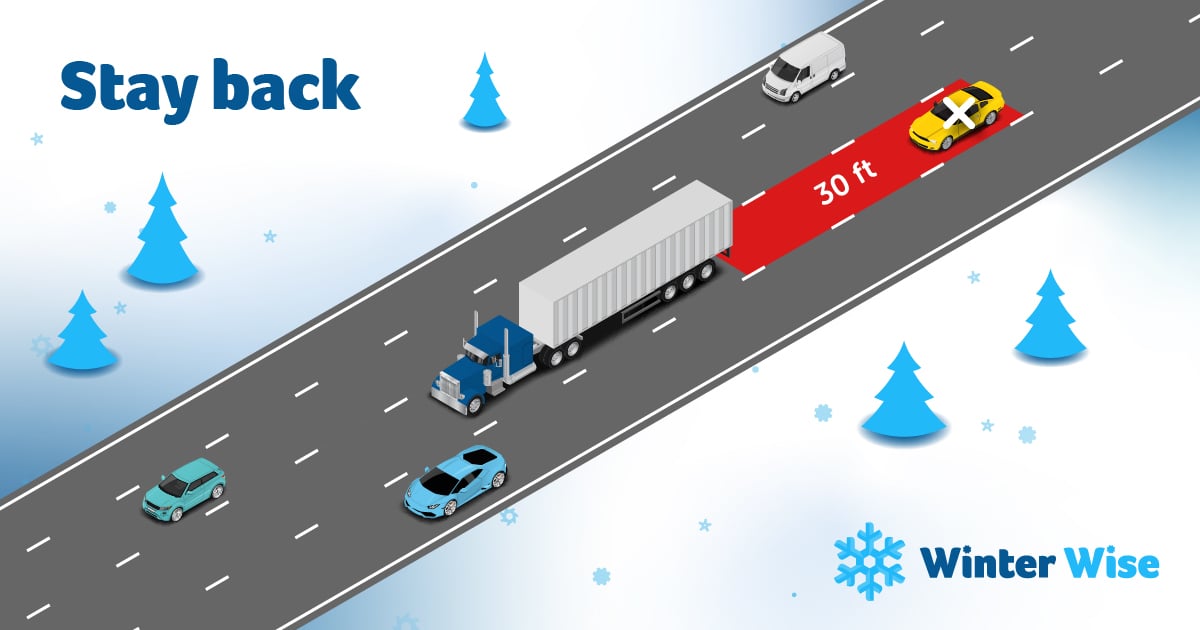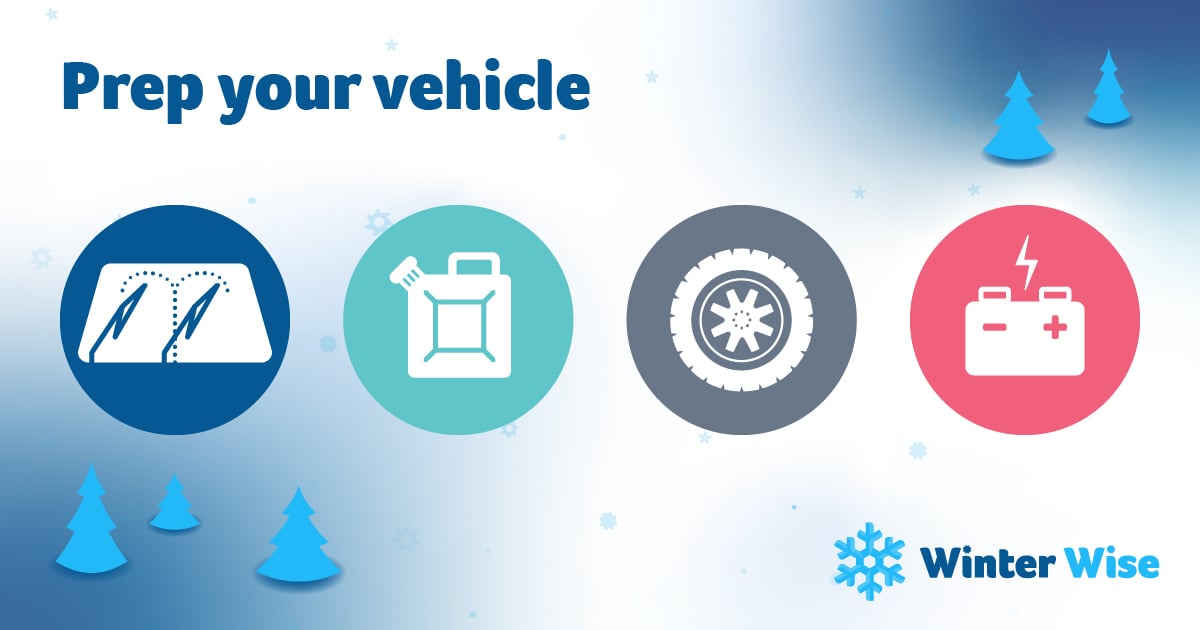Winter Driving Preparedness
Be Prepared for the Road
Whether you’re from Colorado, a new resident or a tourist, driving in Colorado winter weather can be dangerous if you’re not prepared.
The unexpected can happen when snow and ice are on the road — take extra precautions to prepare you and your vehicle for winter road conditions. Consider the preparedness lists below to stay ready for winter weather.
Before you begin your drive, make sure all of the following are in safe operating condition:
-
Windshield wiper fluid
-
Heater/Defroster
-
Wiper blades
-
Radiator/Antifreeze
-
Exterior and interior lights
-
Fuel system and a full tank of gas
-
Ignition
-
Exhaust system
-
Tire tread (at least 3/16-inch)
-
Battery
-
Brakes
Consider having the following items in your vehicle in case of an emergency:
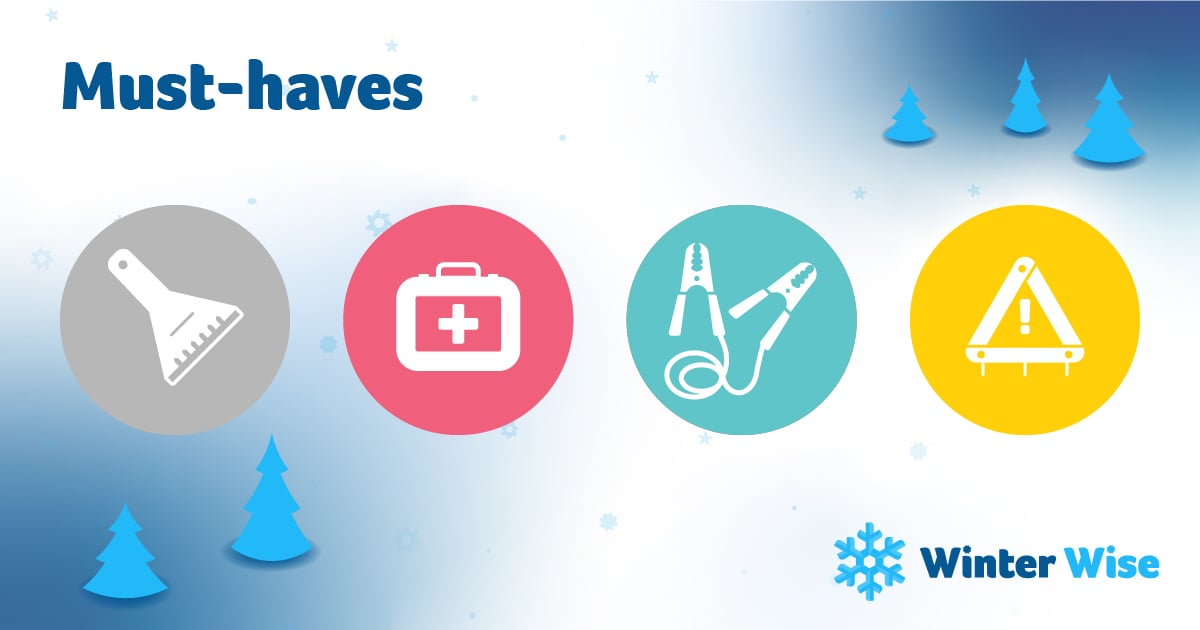
-
Sturdy scraper/snow brush/snow shovel to clear snow
-
Flashlight with extra batteries or crank-powered flashlight
-
Blanket or sleeping bag
-
Gallon jug of water
-
First aid kit and essential medications
-
Tire chains and tow strap
-
Jumper cables
-
Flares/reflectors to signal for help and warn other motorists
-
Battery or crank-powered radio to listen to emergency broadcasts
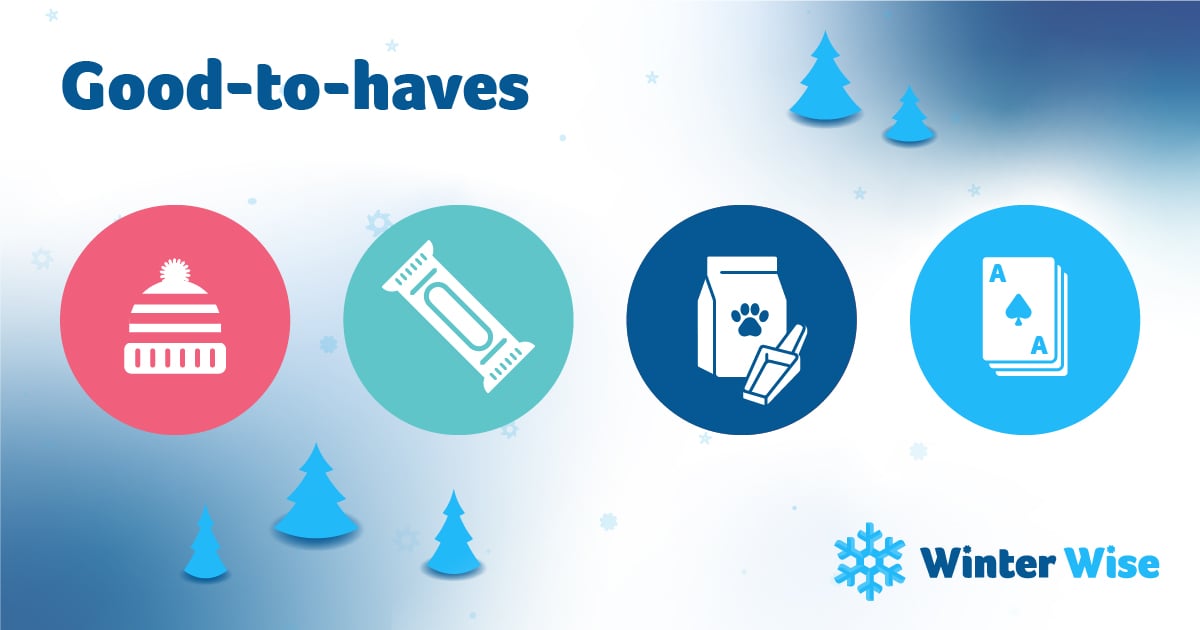
-
Extra set of clothes including a coat, hat, mittens, boots, etc.
-
Hand warmers.
-
Non-perishable snacks like granola bars or trail mix.
-
Non-clumping kitty litter/sand for traction.
-
Deck of cards or board game for entertainment.
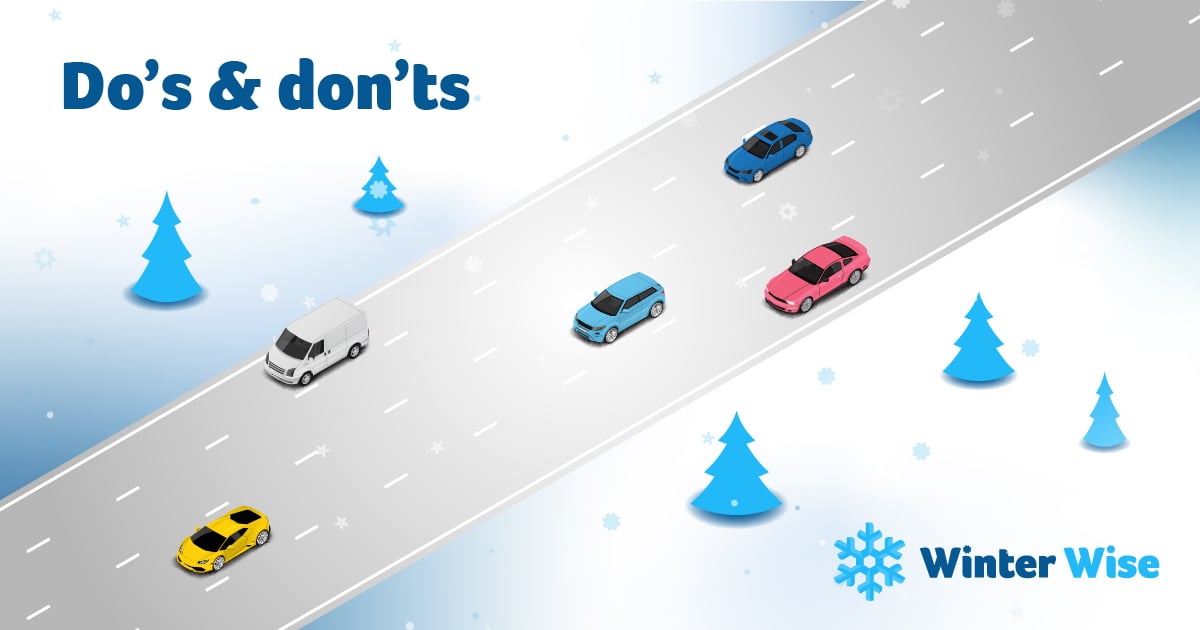
-
Take extra time to clear your car of snow and ice before leaving for your destination.
-
There are three actions you do most when you drive: accelerate, turn and brake. In winter weather, you should only do one of those actions at a time. Attempting more than one of these actions at once can cause slide-outs, spin-outs and other harmful scenarios.
-
When traveling downhill, if possible, switch to a lower gear and gently tap your brakes. This helps to avoid burning your brakes and it helps keep traction on icy roads.
-
Keep momentum when traveling uphill to avoid getting stuck.
-
When driving at night, keep your headlight beams low. High beams can amplify the appearance of snow and lead to decreased visibility.
-
Slow down – driving too fast for conditions causes most crashes.
-
If you encounter a multi-car collision, stay in your car. You’re safer in your car than outside of it.
-
Follow Colorado’s Left Lane Law. No matter the season, keep right except to pass.
-
Signage is your best friend – look ahead and plan ahead for abrupt turns or stops.
-
Always wear your seat belt.
-
Never drive impaired.
Winter weather presents a unique set of challenges to truck drivers and other large commercial vehicle operators navigating Colorado’s roadways. Passenger vehicles should be aware of best practices when driving near trucks in winter conditions.
Commercial trucks have large blind spots on all sides where other vehicles can disappear from the view of the driver. If a professional truck driver has to make a sudden movement, such as a quick lane change to avoid debris or a disabled vehicle, crashes can occur if they can’t see you.
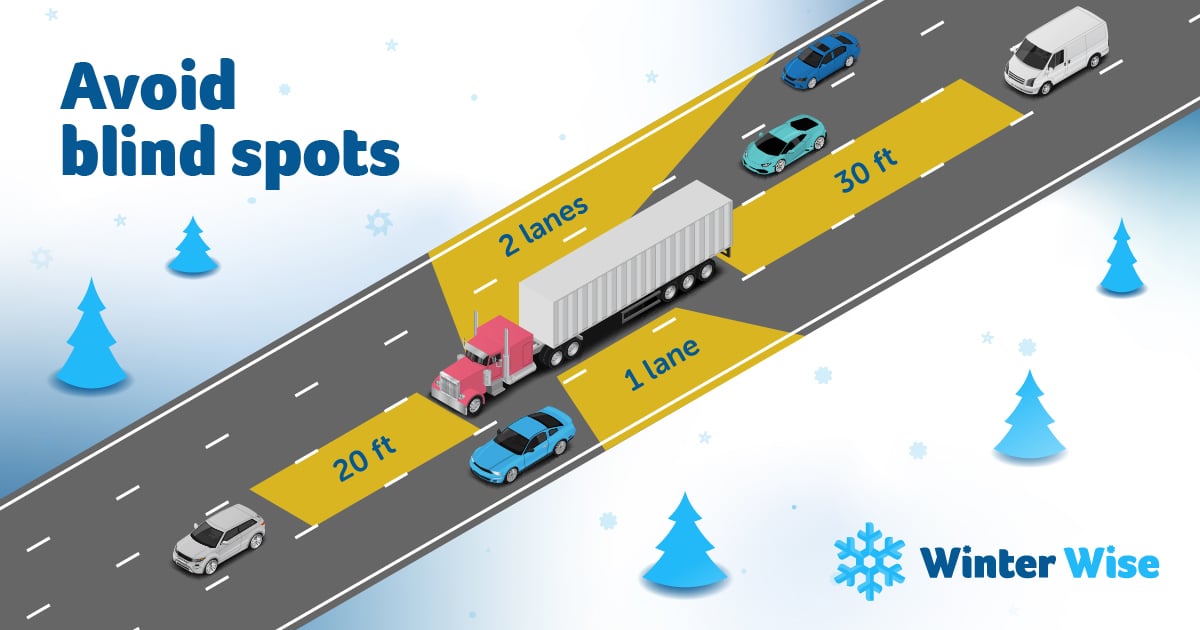
Colorado’s trucking industry works throughout the winter keeping our economy moving. Please give them the courtesy of driving the speed limit, staying alert at all times and eliminating distractions.
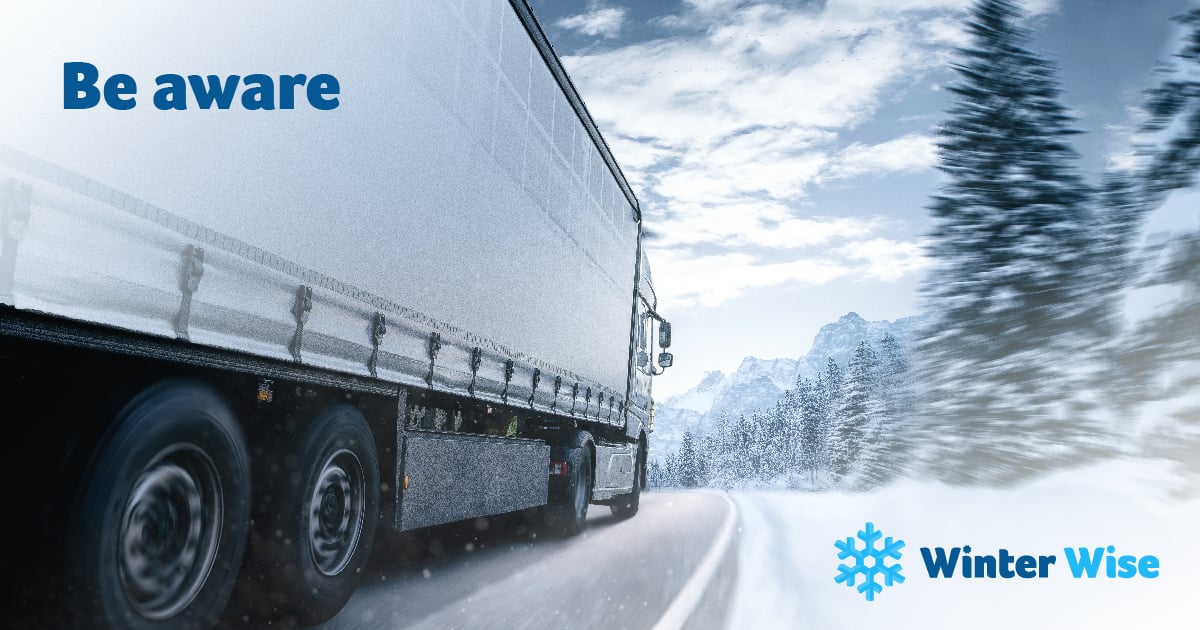
Just like snowplows, commercial trucks command respect in winter driving conditions. It takes more time for these heavier and larger trucks to accelerate and slow down, especially on steep grades. Give them plenty of space!
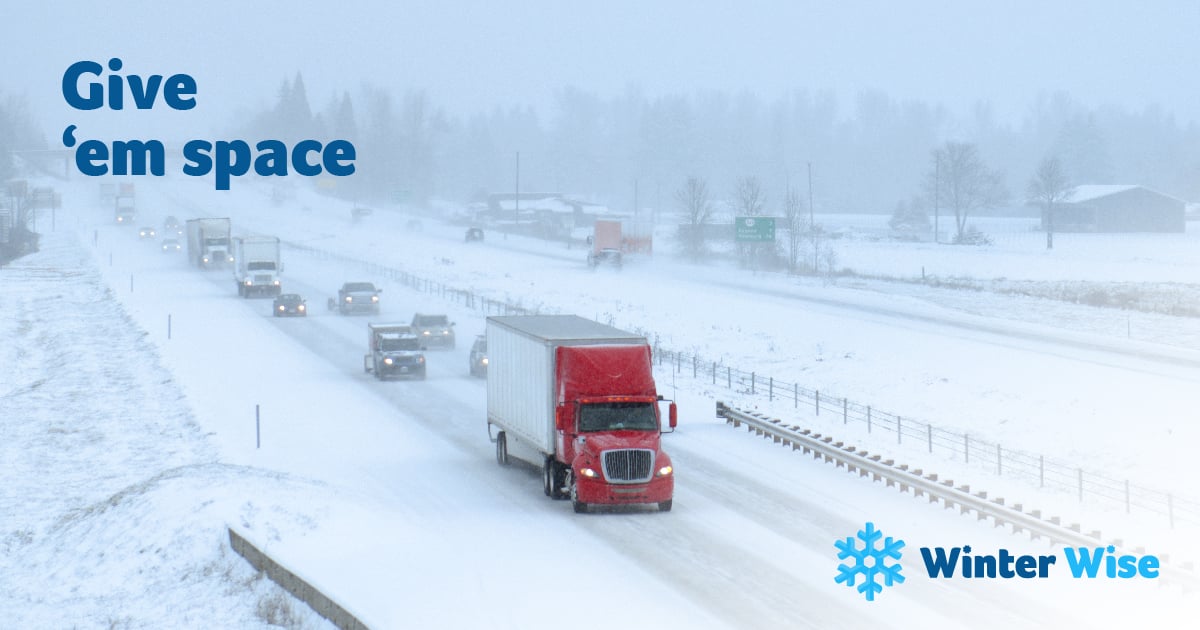
When passing a large truck, do so on the left side and don’t linger alongside the truck in the driver’s blind spot.
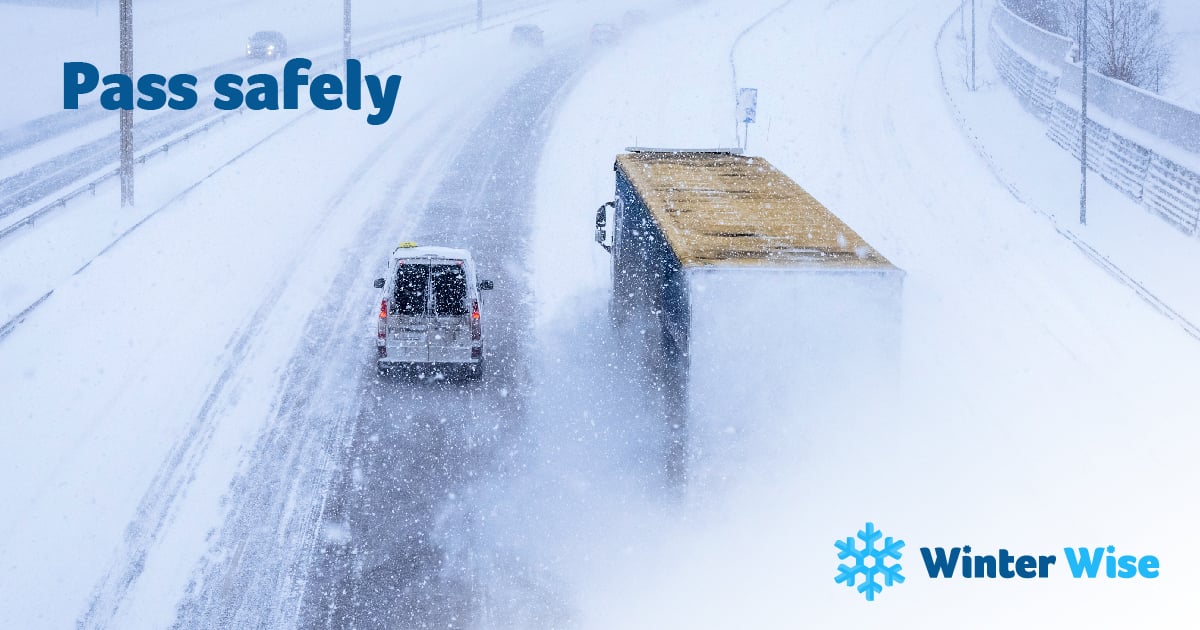
After passing a truck, don’t cut in front of them too quickly. It can take trucks the length of a football field to come to a complete stop — and even more in snowy conditions. You’ll want to leave plenty of space.
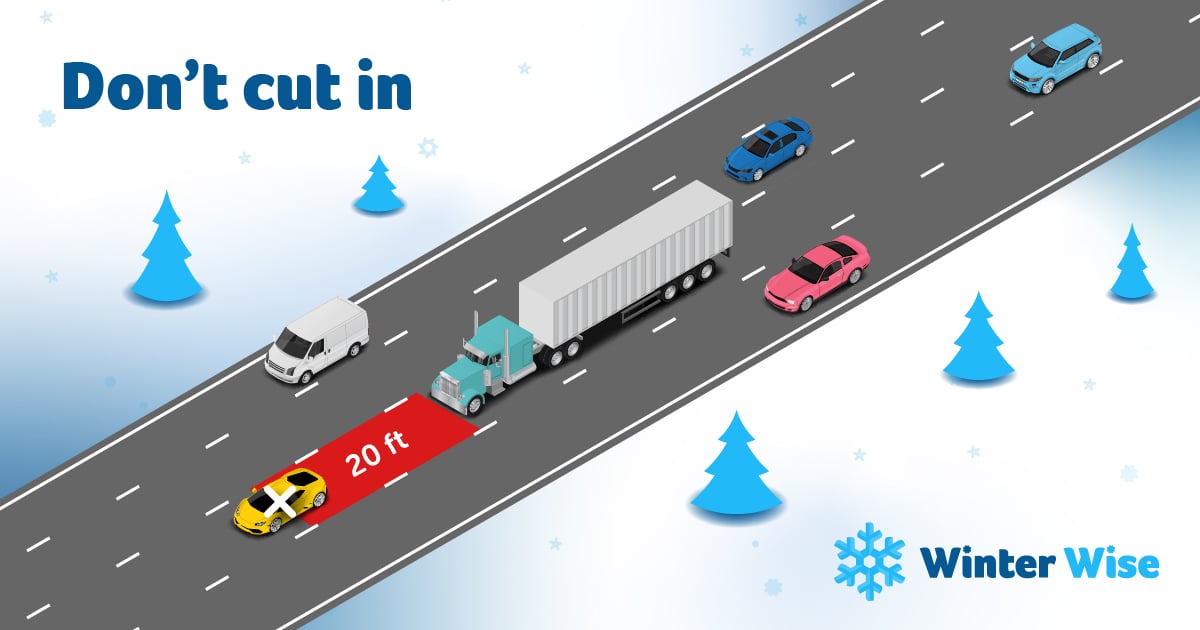
When traveling behind a truck, stay back and out of the blind spot so that the driver knows you’re there. Not to mention, if the truck is using chains, the tires may kick up snow and other debris.
